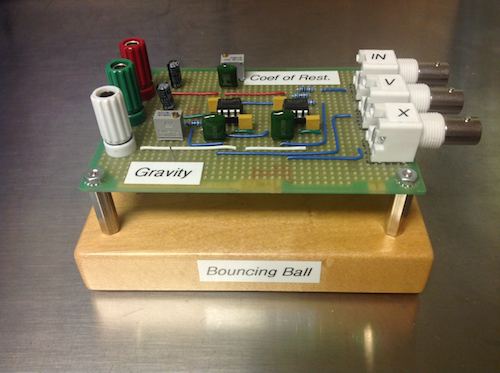Bouncing-ball circuit
This is an electronic circuit that simulates a ball bouncing on an oscillating surface. You can "drive" the surface with an external voltage, changing frequency and amplitude, and you can measure the resulting position and velocity of the ball. You can adjust the strength of the gravitational acceleration and the coefficient of restitution of the ball. At some drive parameters, the motion of the particle becomes chaotic. Interesting investigations could include creation of Poincare plots of the strange attractor, mapping bifurcations, generating return maps, and determination of Lyapunov exponent at different drive parameters.
This circuit was developed from a similar circuit used in the UC Berkeley Advanced Lab course; the current apparatus was built by Eric Ayars. It works reliably.

Reading
- Chaotic dynamics of a bouncing ball
- Fractal dimension of the strange attractor of the bouncing ball circuit
- Strange attractors of a bouncing ball
- The electronic bouncing ball (This is the article from which the circuit was developed.)
- Read enough of one of the books on chaos in room 108 that you know what all the terms in the above description mean.
Questions
- What is phase space, and what should a phase space plot look like for a bouncing ball in a stable repeating 'orbit'?
- What is a return map?
- What are bifurcations, and why are they interesting in the context of chaos?
Location
Room 108, Cabinet 108.12
Hazards
None.